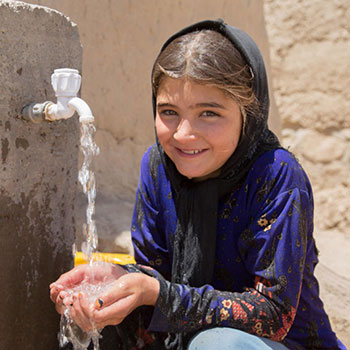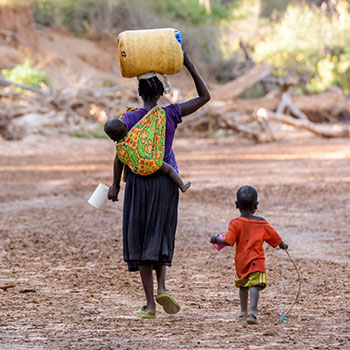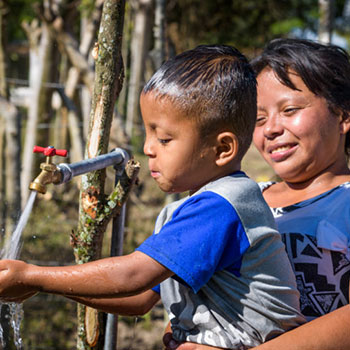Together, we’re changing more lives more ways.
We reach one new person every 10 seconds and three more schools every day with clean water.
Together, we’re changing more lives more ways.
We reach one new person every 10 seconds and three more schools every day with clean water.
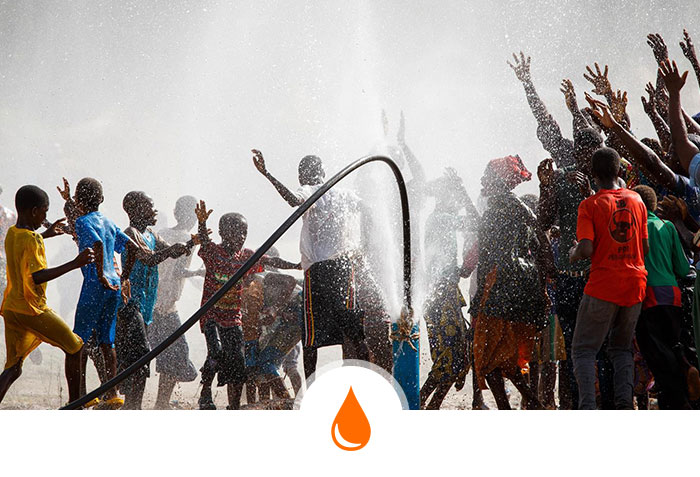
Together, we’re changing more lives more ways.
We reach one new person every 10 seconds and three more schools every day with clean water.
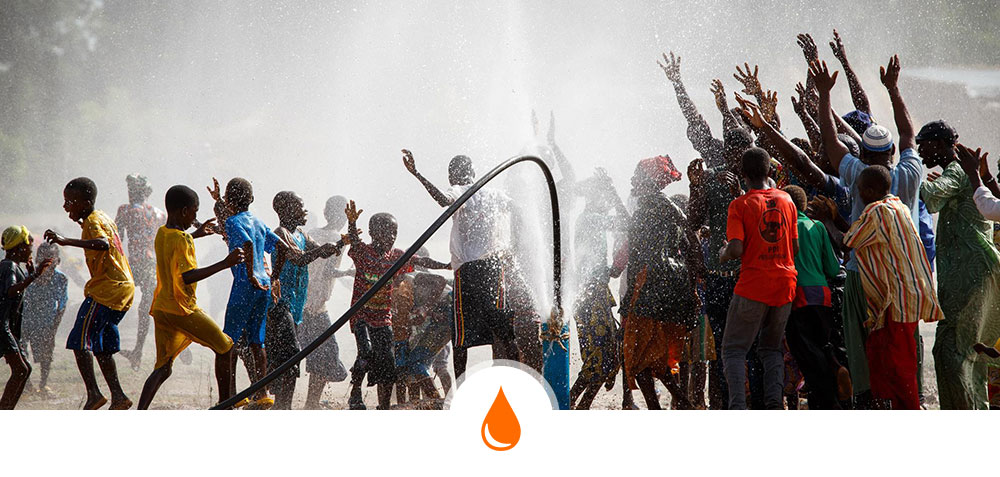
Together, we’re changing more lives more ways.
We reach one new person every 10 seconds and three more schools every day with clean water.
CLEAN WATER
Nearly 1,000 children under age 5 die every day from diarrhea caused by contaminated water, poor sanitation, and improper hygiene. But we believe the global water and sanitation crisis can be solved within our lifetimes. That’s why we’re focused on providing clean water and sanitation to every man, woman, and child in every community we work in, including the most vulnerable populations in the hardest-to-reach places.
For over 30 years, World Vision has been working in impoverished areas to provide safe water, improved sanitation, and hygiene education so that illnesses decrease, health improves, and the burden on women and children is lessened. World Vision’s programs include the voices of the poorest members of the community and collaborate with community leaders to solicit the participation of men and women, people of varying ages (from children through the elderly), as well as those with disabilities and illnesses.
CLEAN WATER
Nearly 1,000 children under age 5 die every day from diarrhea caused by contaminated water, poor sanitation, and improper hygiene. But we believe the global water and sanitation crisis can be solved within our lifetimes. That’s why we’re focused on providing clean water and sanitation to every man, woman, and child in every community we work in, including the most vulnerable populations in the hardest-to-reach places.
For over 30 years, World Vision has been working in impoverished areas to provide safe water, improved sanitation, and hygiene education so that illnesses decrease, health improves, and the burden on women and children is lessened. World Vision’s programs include the voices of the poorest members of the community and collaborate with community leaders to solicit the participation of men and women, people of varying ages (from children through the elderly), as well as those with disabilities and illnesses.
CLEAN WATER
Nearly 1,000 children under age 5 die every day from diarrhea caused by contaminated water, poor sanitation, and improper hygiene. But we believe the global water and sanitation crisis can be solved within our lifetimes. That’s why we’re focused on providing clean water and sanitation to every man, woman, and child in every community we work in, including the most vulnerable populations in the hardest-to-reach places.
For over 30 years, World Vision has been working in impoverished areas to provide safe water, improved sanitation, and hygiene education so that illnesses decrease, health improves, and the burden on women and children is lessened. World Vision’s programs include the voices of the poorest members of the community and collaborate with community leaders to solicit the participation of men and women, people of varying ages (from children through the elderly), as well as those with disabilities and illnesses.
CLEAN WATER
Nearly 1,000 children under age 5 die every day from diarrhea caused by contaminated water, poor sanitation, and improper hygiene. But we believe the global water and sanitation crisis can be solved within our lifetimes. That’s why we’re focused on providing clean water and sanitation to every man, woman, and child in every community we work in, including the most vulnerable populations in the hardest-to-reach places.
For over 30 years, World Vision has been working in impoverished areas to provide safe water, improved sanitation, and hygiene education so that illnesses decrease, health improves, and the burden on women and children is lessened. World Vision’s programs include the voices of the poorest members of the community and collaborate with community leaders to solicit the participation of men and women, people of varying ages (from children through the elderly), as well as those with disabilities and illnesses.
Learn more about World Vision’s clean water work
As the world’s largest nongovernmental provider of clean water in the developing world, World Vision brings clean water to one new person every 10 seconds. Here are five examples of our water work around the world. Read More.
World Vision’s Global 6K for Water is a one-day event where people from all over the world walk and run 6K in their own neighborhoods to bring lasting clean water to children in need. Every step you take is one they won’t have to. Read More.
There’s nothing more essential than clean water, yet a global water crisis means people are struggling to access the quantity and quality of water they need. As the leading humanitarian provider of clean drinking water in the developing world. Read More.
Learn more about World Vision’s clean water work
As the world’s largest nongovernmental provider of clean water in the developing world, World Vision brings clean water to one new person every 10 seconds. Here are five examples of our water work around the world. Read More.
World Vision’s Global 6K for Water is a one-day event where people from all over the world walk and run 6K in their own neighborhoods to bring lasting clean water to children in need. Every step you take is one they won’t have to. Read More.
There’s nothing more essential than clean water, yet a global water crisis means people are struggling to access the quantity and quality of water they need. As the leading humanitarian provider of clean drinking water in the developing world. Read More.
Learn more about World Vision’s clean water work
As the world’s largest nongovernmental provider of clean water in the developing world, World Vision brings clean water to one new person every 10 seconds. Here are five examples of our water work around the world. Read More.
World Vision’s Global 6K for Water is a one-day event where people from all over the world walk and run 6K in their own neighborhoods to bring lasting clean water to children in need. Every step you take is one they won’t have to. Read More.
There’s nothing more essential than clean water, yet a global water crisis means people are struggling to access the quantity and quality of water they need. As the leading humanitarian provider of clean drinking water in the developing world. Read More.
Learn more about World Vision’s clean water work
As the world’s largest nongovernmental provider of clean water in the developing world, World Vision brings clean water to one new person every 10 seconds. Here are five examples of our water work around the world. Read More.
World Vision’s Global 6K for Water is a one-day event where people from all over the world walk and run 6K in their own neighborhoods to bring lasting clean water to children in need. Every step you take is one they won’t have to. Read More.
There’s nothing more essential than clean water, yet a global water crisis means people are struggling to access the quantity and quality of water they need. As the leading humanitarian provider of clean drinking water in the developing world. Read More.
Ways to Give to Clean Water
Provide clean water and sanitation: $30+
Giving to the Clean Water Fund will help bring clean water, sanitation, and hygiene to communities — helping cut child deaths by more than half! You can have the biggest impact by becoming a Clean Water Partner with a monthly gift.
Give a Share of a Deep Well: $150
Clean water lies hundreds of feet below layers of hard rock in many communities. A deep well can provide up to 2,800 gallons of clean water a day to benefit as many as 300 people. In addition, a deep well can cut a community’s child death rate by as much as half!
Ways to Give to Clean Water
Provide clean water and sanitation: $30+
Giving to the Clean Water Fund will help bring clean water, sanitation, and hygiene to communities — helping cut child deaths by more than half! You can have the biggest impact by becoming a Clean Water Partner with a monthly gift.
Give a Share of a Deep Well: $150
Clean water lies hundreds of feet below layers of hard rock in many communities. A deep well can provide up to 2,800 gallons of clean water a day to benefit as many as 300 people. In addition, a deep well can cut a community’s child death rate by as much as half!
Our Clean Water Approach
Can you give me an overview of your water, sanitation, and hygiene (WASH) work?
For over 30 years, World Vision has been working in impoverished areas to provide safe water, improved sanitation, and hygiene education so that illnesses decrease, health improves, and the burden on women and children is lessened. World Vision’s programs include the voices of the poorest members of the community and collaborate with community leaders to solicit the participation of men and women, people of varying ages (from children through the elderly), as well as those with disabilities and illnesses. With our team of 500 WASH experts working with these communities worldwide, we reach one new person with safe water every 30 seconds.
Why does World Vision combine safe water with sanitation and hygiene?
Safe drinking water, improved sanitation, good hygiene, and good water resource management can lead to a reduction in child mortality, cut transmission of malaria, improve public health, and reduce extreme poverty. Providing hygiene education and sanitation facilities, like latrines and hand washing stations, dramatically multiplies the health benefits of safe water by helping to reduce disease transmission through fecal contamination and unwashed hands. Combining water, sanitation, and hygiene interventions can cut preventable child deaths by up to 57 percent, reduce chronic malnutrition by 40 percent, reduce school absenteeism among girls by 50 percent, and obtain an 8:1 economic return in target communities. So intertwined are the issues of water, sanitation and hygiene that they have been combined into one sector known in the global aid community as “WASH”.
How does World Vision provide safe water, and how does World Vision ensure water service developed from its programming is sustainable and effective?
World Vision develops the most appropriate safe water source for each community we work in. Some of the technologies we use include drilling deep wells to reach aquifers far below ground and hand-drilling wells when the water table is closer to the surface.
In larger communities, wells with a high water yield can be mechanized with solar pumps to reach more people. When fresh spring water is available, World Vision can protect and cap the spring to provide water to nearby communities. World Vision often uses rainwater-harvesting systems to provide clean water at schools.
World Vision’s model contributes to community ownership and training in maintenance of water points so that water continues to flow long after our work concludes. Because we invest an average of 15 years in a community, local people take ownership of the water points and learn how to repair them when they break down.
We establish water management committees to maintain and operate water points. These committees collect small fees to pay for repairs as needed — an approach that helps ensure communities have the knowledge and financial resources to keep their water points working smoothly.
How does World Vision improve sanitation and hygiene? How does this improve child and community health?
Our sanitation and hygiene interventions focus on promoting lasting behavior change. Instead of simply building latrines ourselves, World Vision uses a participatory, community-driven approach that motivates households to build, maintain, and regularly use their own latrines. Hygiene education encourages community members to modify their hygiene habits by washing their hands and dishes with soap (or ash) and practicing safe water handling and storage.
What are you doing to make your water, sanitation, and hygiene programs more efficient and effective?
To streamline our work and become more efficient, we’re working on some key innovations and partnerships that we’re pretty excited about:
- Partnerships: We’ve developed a wide range of partnerships including with some of the best academic institutions, corporations, and foundations. Visit our partnership page to learn more.
- Learning centers: Three regional learning centers in Africa focus on providing specialized technical support.
- Low-cost water supply: We are scaling up an alternative market-based approach to water supply through local entrepreneurs who manually dig wells using augers, which can cut costs by a factor of 10. World Vision is also investing in smaller, trailer-mounted drill rigs that cost half the price and require half the crew of larger, traditional drill rigs.
- Information tracking: Geographic Information System that tracks information across WASH programs in 10 countries in Africa.
Our Clean Water Approach
Can you give me an overview of your water, sanitation, and hygiene (WASH) work?
For over 30 years, World Vision has been working in impoverished areas to provide safe water, improved sanitation, and hygiene education so that illnesses decrease, health improves, and the burden on women and children is lessened. World Vision’s programs include the voices of the poorest members of the community and collaborate with community leaders to solicit the participation of men and women, people of varying ages (from children through the elderly), as well as those with disabilities and illnesses. With our team of 500 WASH experts working with these communities worldwide, we reach one new person with safe water every 30 seconds.
Why does World Vision combine safe water with sanitation and hygiene?
Safe drinking water, improved sanitation, good hygiene, and good water resource management can lead to a reduction in child mortality, cut transmission of malaria, improve public health, and reduce extreme poverty. Providing hygiene education and sanitation facilities, like latrines and hand washing stations, dramatically multiplies the health benefits of safe water by helping to reduce disease transmission through fecal contamination and unwashed hands. Combining water, sanitation, and hygiene interventions can cut preventable child deaths by up to 57 percent, reduce chronic malnutrition by 40 percent, reduce school absenteeism among girls by 50 percent, and obtain an 8:1 economic return in target communities. So intertwined are the issues of water, sanitation and hygiene that they have been combined into one sector known in the global aid community as “WASH”.
How does World Vision provide safe water, and how does World Vision ensure water service developed from its programming is sustainable and effective?
World Vision develops the most appropriate safe water source for each community we work in. Some of the technologies we use include drilling deep wells to reach aquifers far below ground and hand-drilling wells when the water table is closer to the surface.
In larger communities, wells with a high water yield can be mechanized with solar pumps to reach more people. When fresh spring water is available, World Vision can protect and cap the spring to provide water to nearby communities. World Vision often uses rainwater-harvesting systems to provide clean water at schools.
World Vision’s model contributes to community ownership and training in maintenance of water points so that water continues to flow long after our work concludes. Because we invest an average of 15 years in a community, local people take ownership of the water points and learn how to repair them when they break down.
We establish water management committees to maintain and operate water points. These committees collect small fees to pay for repairs as needed — an approach that helps ensure communities have the knowledge and financial resources to keep their water points working smoothly.
How does World Vision improve sanitation and hygiene? How does this improve child and community health?
Our sanitation and hygiene interventions focus on promoting lasting behavior change. Instead of simply building latrines ourselves, World Vision uses a participatory, community-driven approach that motivates households to build, maintain, and regularly use their own latrines. Hygiene education encourages community members to modify their hygiene habits by washing their hands and dishes with soap (or ash) and practicing safe water handling and storage.
What are you doing to make your water, sanitation, and hygiene programs more efficient and effective?
To streamline our work and become more efficient, we’re working on some key innovations and partnerships that we’re pretty excited about:
- Partnerships: We’ve developed a wide range of partnerships including with some of the best academic institutions, corporations, and foundations. Visit our partnership page to learn more.
- Learning centers: Three regional learning centers in Africa focus on providing specialized technical support.
- Low-cost water supply: We are scaling up an alternative market-based approach to water supply through local entrepreneurs who manually dig wells using augers, which can cut costs by a factor of 10. World Vision is also investing in smaller, trailer-mounted drill rigs that cost half the price and require half the crew of larger, traditional drill rigs.
- Information tracking: Geographic Information System that tracks information across WASH programs in 10 countries in Africa.
Hi, we’re World Vision.
We’re a Christian humanitarian organization helping children, families, and their communities overcome poverty and injustice.

Love comes
first
Motivated by our faith in Jesus Christ, we serve all people. No matter their religion, ethnicity, or gender.
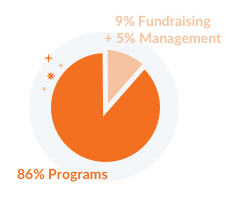
Thriftiness
Keeping our costs down means your gifts make the biggest waves possible.

Targeting root
causes
Going after poverty’s symptoms is temporary. Going after its causes is permanent.
Hi, we’re World Vision.
We’re a Christian humanitarian organization helping children, families, and their communities overcome poverty and injustice.

Love comes
first
Motivated by our faith in Jesus Christ, we serve all people. No matter their religion, ethnicity, or gender.

Thriftiness
Keeping our costs down means your gifts make the biggest waves possible.

Targeting root
causes
Going after poverty’s symptoms is temporary. Going after its causes is permanent.
